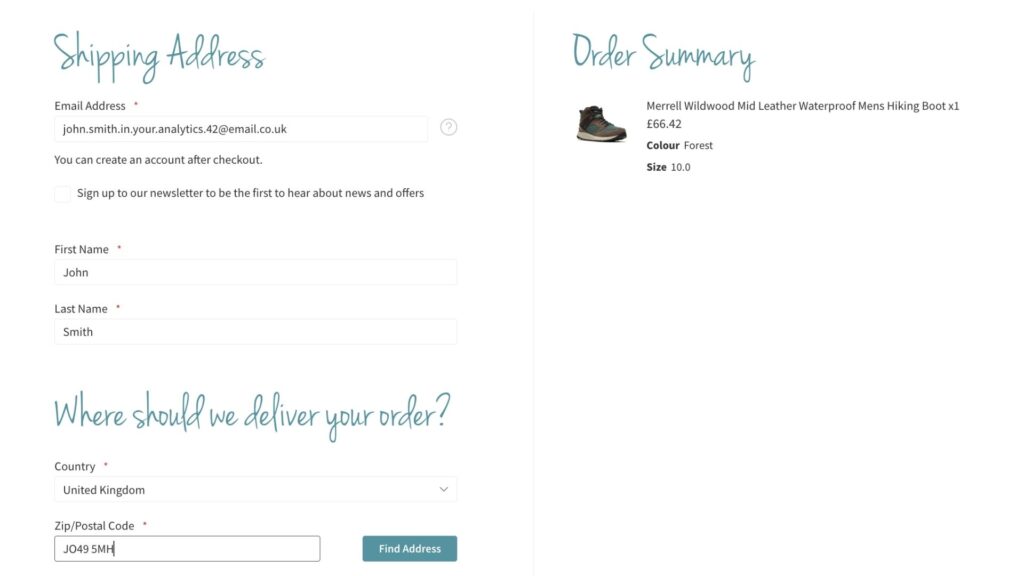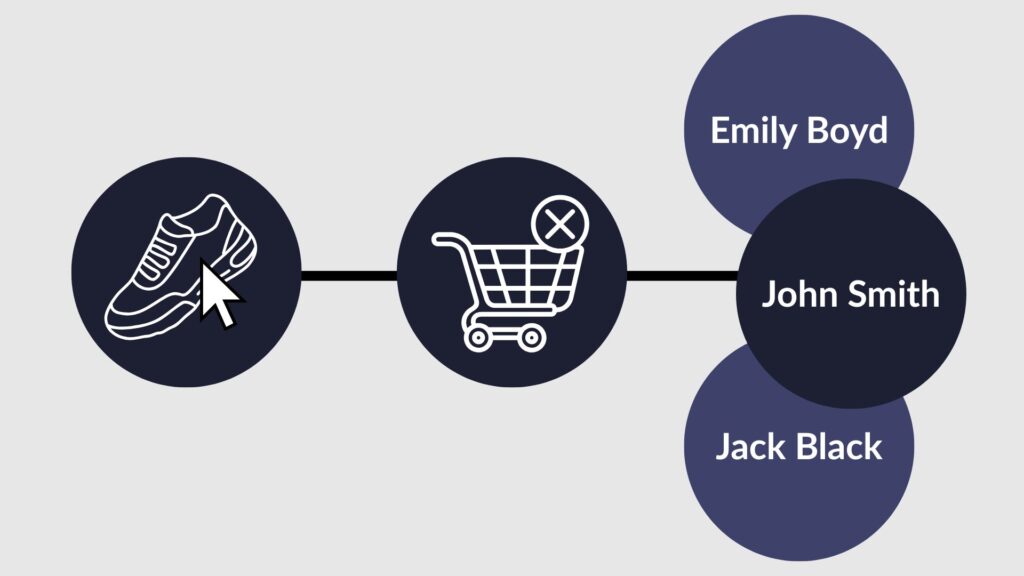
Who is John Smith and why is he abandoning your cart, basket and emails? If you haven't yet noticed this elusive John Smith when analysing your data, then chances are he'll pop up in the future. If you have spotted him, then you're no doubt left wondering why he's abandoning everything he touches. That's because, after we did some digging, all's not what it seems…
We first noticed the mysterious John Smith when investigating one of our client's checkout analytics. Puzzled, we dug a little deeper and found he had been consistently in abandoned cart reports over a long period of time. This unusual activity led us to delve even deeper into the John Smith rabbit hole.
After conducting a detailed analysis of IP addresses and behavioural tracking, we uncovered the truth. John Smith wasn't a real customer. John Smith was actually Googlebot systematically testing our client's eCommerce platform. That meant Googlebot was the one creating the false checkout abandonment alerts.
John Smith's checkout behaviour followed unnaturally consistent patterns: identical geographic data, repetitive demographic information, and, most tellingly, IP addresses that traced directly back to Google's servers. Real customers and their behaviours are unpredictable, as they may add or remove items, get distracted by other products, or simply abandon their basket entirely to walk the dog. John Smith, though? He followed the same path every time as if he were following a script.
What caught our attention was that Google wasn't just skimming the surface like we'd assumed, but going much deeper. Googlebot navigated through complex checkout processes, entered false address details, and reached payment pages before abandoning the transaction. The bot demonstrated a strong understanding of eCommerce user journeys, mimicking real customer behaviour right up until the final payment step.
John Smith's journey was consistent across our client's site, too, and he would always abandon the checkout at predictable stages. For many eCommerce businesses, these false signals can skew their abandonment analytics and potentially trigger unnecessary marketing automation sequences. But the question is… why this behaviour?

By using John Smith as a persona, Google gains insights into pricing structures. Think of him as Google's undercover price detective. He's there to catch the friction points that may prevent customers from purchasing, such as complex shopping journeys, shipping costs not mentioned upfront, or any other hidden fees that might deter real customers.
This behaviour stems from Google's need to ensure accuracy in advertising products, such as Google Shopping, to protect consumers from misleading pricing. When your products show up in Google Shopping, Google wants to make sure you're being upfront about the costs and not engaging in any pricing games. They want to make sure that a £79 product actually costs £79 at checkout or if it mysteriously becomes £100 once you start adding any shipping or handling fees. It's basically Google's way of keeping everyone honest.
This price validation strategy is essentially Google's way of ensuring everyone is honest and adheres to Google Shopping's accuracy requirements. Google's basically running a sting operation on dodgy pricing. John Smith goes through your entire checkout process, adding up all the costs that real customers would see. If there's a big difference between what you advertise and what people actually pay, Google notices.
And here's the thing - Google really doesn't like being made to look bad. If customers click through from Google Shopping expecting to pay £50 and suddenly face a £75 bill, that reflects poorly on Google's recommendations.
Sites that keep their pricing consistent from the product page to the payment page tend to stay in Google's good books. Those that don't? They might find their products getting buried in search results.
Google won't spell out exactly how it does this (trade secrets and all that), but John Smith's checkout adventures show just how thorough it has become. It's impressive from a technical standpoint alone.
The connection between this crawling behaviour and Google Merchant Centre requirements means that businesses serious about Google Shopping success need to maintain pricing transparency throughout their entire customer journey. Any discrepancies between advertised prices and checkout totals could impact search visibility and customer trust.

John Smith isn't the only persona in Google's eCommerce crawling toolkit. We've seen a few other references in client reports that relate to familiar names, such as Emily Boyd and Jack Black. Each of these personas serves similar purposes but could focus on different aspects of the eCommerce experience or target specific market segments.
Tech is an ever-evolving landscape, so it's no surprise that Google's crawling capabilities are evolving just as fast. What started as basic web crawling in the early days has become sophisticated customer journey analysis, complete with persona-based testing that copies real shopping behaviour. This development shows Google's recognition that eCommerce requires a different approach to traditional web content indexing.
What used to work for ranking eCommerce sites well is now changing. Google's getting smarter about understanding what makes a good online store, and they're factoring that into how they treat your site. If your checkout process is smooth and your pricing is transparent, Google's more likely to send traffic your way.
However, suppose your site is difficult to navigate, or you're engaging in deceptive pricing practices. In that case, Google's algorithms are becoming increasingly adept at identifying these issues and will penalise you in its search engine rankings.
With all the above in mind, it's easy to understand why working with developers who genuinely understand eCommerce matters more than ever. We're not just talking about fundamental SEO anymore, as Google's looking at your entire customer experience and making decisions based on that.

If you're receiving John Smith in your analytics, don't panic! Whilst you might get some cloudy measurements from abandoned cart notifications, they aren't a sign of genuine customer loss, so there's nothing to be concerned about. This behaviour is just part and parcel of Google's normal operations, so understanding Google's John Smith crawling behaviour should be reassuring.
The bottom line is to maintain consistent pricing from start to finish. If John Smith (or a real customer) sees one price on your product page and a different one at checkout, that will cause problems… both with Google's algorithms and with actual human beings trying to buy from you.
Be upfront about shipping costs, taxes, and any other fees. Google's watching, and more importantly, so are your customers.
For businesses seeing John Smith activity in their analytics, it's worth reviewing your checkout process to ensure it provides a smooth experience for both bots and real customers.
If you're experiencing unusual activity in your eCommerce analytics or need expert technical insight into your online store's performance, our experienced team at magic42 can provide comprehensive site analysis and optimisation strategies. We understand these technical nuances and can help ensure your eCommerce platform performs optimally for both customers and search engines.
For more insights into eCommerce technical challenges, you might find our articles on the srsltid parameter in Google search results and European Accessibility Act compliance helpful for maintaining technical excellence.
At magic42, we've built our expertise through real-world eCommerce experience, having grown from a successful retail business ourselves. We understand these challenges because we've faced them firsthand.
Whether you're seeing mysterious abandonment patterns in your analytics, need help optimising your checkout process, or want to make sure your eCommerce platform meets Google's evolving standards, our experienced team helps you get the best out of your platform.



